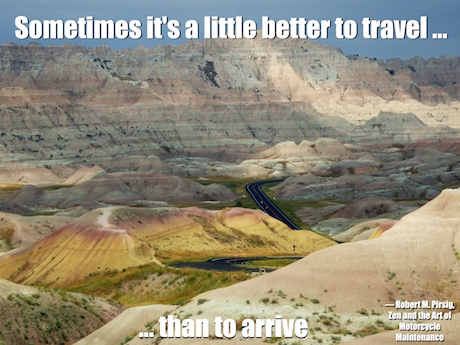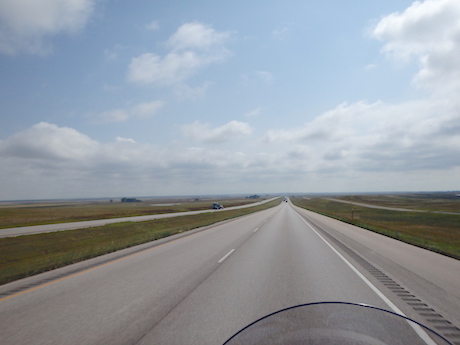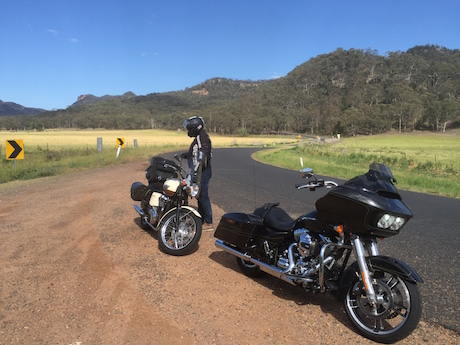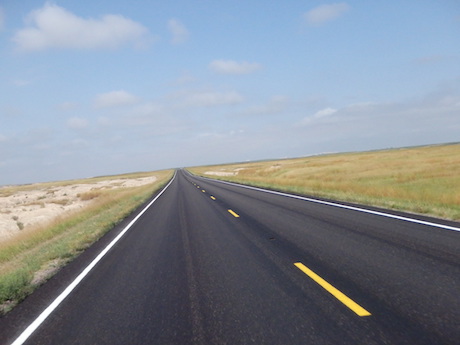Every now and then we need to ride long distances and don’t have time for taking in scenery, challenging roads and long bench-racing sessions with mates.
It’s not very enjoyable unless you’re one of those sadists in organisations such as Far Riders or the Iron Butt event where they ride 1600km a day for 10 days.
But if you need to travel a long distance quickly, there are several things you can do to complete your journey as safely as possible, without having to resort to speeding.
Here are our top 10 tips for quick and legal long riding distances:
1 PREPARATION
Just like a marathon runner, you need to prepare for the marathon by doing some long stints in advance. That will help you get accustomed to long distances and also alert you to any problems with the bike, your luggage or your physical/mental state. Problems can then be fixed before you leave rather than on the road, such as securing unruly luggage. Bike prep includes servicing, checking tyre condition and pressure, and even making sure you are fully fuelled before departure to save you another petrol stop. Your prep should also include an early night with no alcohol for a good sleep.
2 LEAVE EARLY
Assuming you are leaving a city, you will be travelling against the traffic, so that’s not a problem, but you don’t want to get into the bush too soon as that’s when the wildlife are out and about. Time your departure so you give the fauna a couple of hours from dawn to get their brekky.
3 BIKE SELECTION
If you’re lucky enough to have more than one bike, choose the most reliable. Roadside repairs will be the biggest time-waster. I was lucky enough to recently ride 1000km to Bathurst in the armchair comfort of a 2016 Harley-Davidson Road Glide while my riding partner, Mitch, was unfortunate enough to score my Triumph Bonneville. However, with a few mods, he was comfortable; which brings us to our next subject.
4 BIKE MODS
You can turn even the most uncomfortable and unlikely tourer into a good mile-muncher with some mods. Cruise control will save aching wrists and your precious licence points. A windscreen or windscreen extension will decrease fatiguing buffeting. An Airhawk seat will eliminate “hot spots” on your seat and numb bum. You should also adjust the levers for the most comfortable setting. A GPS will avoid the need to stop and check a map. Bluetooth will provide musical entertainment on the long-straight, boring highway as well as on-the-run communication with riding partners rather than stopping to discuss directions or plans. Make sure luggage is secured with quality straps and not flapping around or in need of constant checking. An auxiliary fuel can will increase your mileage in remote areas.
5 EAT AND DRINK
A former Iron Butt rider told me the secret to riding long distances quickly is reducing the number of stops. Pretty obvious, eh? But he added that reducing stops requires you to eat and drink in small amounts. A low GI breakfast and lunch will keep you running longer without need for a stop. Avoid coffee which will necessitate another toilet break. Sip water regularly in small amounts from a Camelback to avoid dehydration which can increase fatigue. High-sugar energy drinks spike your awareness, but have a reverse effect later on.
 6 STOP SHORT
6 STOP SHORT
My Iron Butt friend said fuel stops are the enemy, so he has a bike with a big tank and an auxiliary tank. However, if you have a limited tank, just make sure that your fuel stops are expeditious. Have a plan in your head before stopping, don’t dawdle and you won’t waste much time. It’s also a good time for a stretch; which brings us to our next point.
7 STRETCH
You will get saddle sore, numb bum and aching wrists. So it’s important to occasionally stretch. You can legally and safely do some stretches on the bike. Avoid using highway pegs as they take your feet away from vital controls. Stretch one leg or arm at a time and stand up as you ride slowly through towns. It’s ok to stop and get off the bike every now and then. Even a one-minute stop to massage your buttocks won’t set you back much and will prolong your saddle time. Try to do this every couple of hours. It will make your riding more effective. Tired and sore riders are unsafe and slow.
8 COLD WAR
The cold is also an enemy of the long-distance rider. It concentrates your efforts on trying to stay warm, rather than on the road. Fit handlebar warmers and wear the right gear so that you are comfortable. Same goes for hot weather. Hot or cold riders fatigue quicker.
9 RAIN
Rain will slow you down. Check the weather radar and try to avoid riding through storms. If you can’t, then make sure you have all the wet gear on BEFORE you hit the storm. Nothing worse than putting on rain gear over already-wet clothes.
10 SAFETY
This should really be number 1. Make sure you have a first-aid kit and have attended a first-aid course in case the worst happens. Also, get your significant other to follow your progress with an app like Find My Friends. Knowing that you are safe and being monitored will make you feel more comfortable so you can concentrate on the job at hand of getting to your destination.





 6 STOP SHORT
6 STOP SHORT